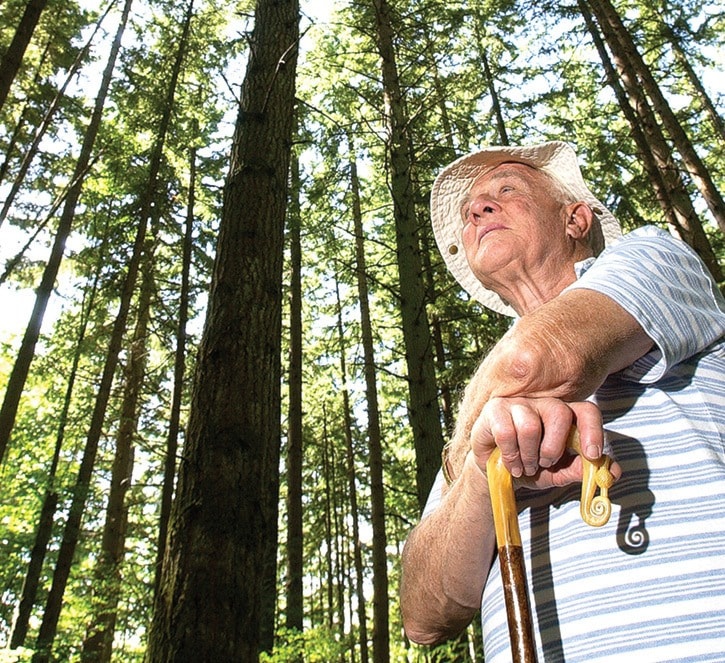Next month, Sunnyside Acres Heritage Society (SAHS) and Surrey Parks will together celebrate the upcoming 25th anniversary of dedication of Sunnyside Acres as an urban forest ‘in perpetuity.’
The trees, of course, are much older, approaching 100 years, but it was only in 1988 that the City of Surrey formally dedicated the 130-hectare woodland.
That dedication came about in response to strong public pressure, with what was then the ‘Save our Sunnyside’ (SOS) group – of which I was a founding member – assembling a membership of more than 2,000.
SOS presented the case for preservation of this, the last remaining sizable stand of Douglas-fir and alder in southwestern B.C., the coastal Douglas-fir (CDF) biogeoclimatic region.
The forest is frequented by more than seventy bird species, along with deer, coyotes, raccoons, squirrels, chipmunks and several smaller animal and amphibian species.
With dedication enacted and the forest saved, SOS was dissolved and replaced by the society that works closely with Surrey’s parks department as stewards of the forest.
Newcomers to the area and visitors enjoying the forest often comment that “we’re lucky to have it.” In fact, much more than luck, it was hard work and sound, persuasive argument by the SOS group, which ensured the survival of the Forest.
Now, SAHS and Surrey parks staff implement the fundamental and basic management principle of letting natural progression develop unimpeded, with only a minimum of interference to ensure public safety.
Even when a diseased or moribund tree adjacent to an authorized trail is felled, it is left on the ground to decay and be recycled into the soil.
Despite dedication, the forest remains threatened, not so much from extensive clearing but from unthinking disturbances along the edges and the carelessness or selfishness of visitors, especially during each fire season.
We have also had to deal with work crews overstepping boundaries, unauthorized bicycle-jump circuits, casual camps, dumping of garbage and garden wastes. Last year, someone illegally released alien gray squirrels into the forest, where they – being larger and more aggressive – will dominate and likely drive out resident native Townsend squirrels.
The society’s quiet effectiveness as forest watchdog seems to have induced some complacency in the community. As a result membership has fallen to a worrisomely low number, and so the burden of surveillance falls on the executive.
That they are re-elected year after year suggests that the community is satisfied with their stewardship, but it could also indicate a readiness to enjoy the forest without contributing to its well-being.
Most visitors to the forest – and happily there are many – are not SAHS members yet. When asked the question if they would care if the forest was cleared, they invariably answer a strong ‘yes.’
Another concern for the society is the lack of involvement by local schools. Here is an accessible native environment that can serve as an outdoor laboratory for students at all levels to experience natural processes in action and learn that ‘environment’ is vibrant and real, not just an abstract idea.
However, despite such disappointments, and as long as ‘in perpetuity’ means what it says, the trees, other plants and the birds and animals will continue to provide many benefits to the community thanks to the efforts of SOS 25 years ago and continuing public support today.
Dr. Roy Strang writes monthly on the environment for the Peace Arch News. rmstrang@shaw.ca
